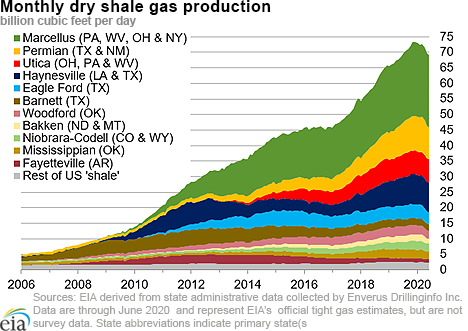In the News:
Russia’s ethane production is expected to increase more than ten-fold by 2025
Before 2020, Russia’s natural gas processing plant ethane production was approximately 25,000 barrels per day (b/d). If all planned natural gas projects come online, Russia could produce nearly 300,000 b/d of ethane from more than 70 billion cubic feet per day (Bcf/d) of projected natural gas production by 2025. This estimate compares with 2019 U.S. natural gas plant ethane production of 1.8 million b/d out of 92.0 Bcf/d of dry gas production.
Ethane is co-produced with natural gas in Russia, and limited domestic demand for ethane has resulted in natural gas processors leaving the ethane in the pipeline gas stream—a process referred to as ethane rejection. Ethane production in Russia began in 1992 with natural gas processing plants in Orenburg—located in southwest Russia near the border with Kazakhstan—supplying about 25,000 b/d of ethane feedstock to the Kazanorgsintez petrochemical plant in Kazan via a 500-mile ethane pipeline.
Responding to growing natural gas production from the Yamal-Nenets region in Western Siberia, Sibur—Russia’s largest independent midstream operator—recently completed a hydrocarbon gas liquids (HGL) pipeline to its natural gas processing and fractionation center at Tobolsk, located approximately 600 miles south of the natural gas-producing region. Sibur completed construction on its new 1.5 million metric tons per year (mt/y) ethylene cracker in the first quarter of 2020. When fully operational, the plant will consume ethane as 20% of its feedstock, doubling Russia’s ethane market to about 50,000 b/d.
Going forward, three additional petrochemical plants designed to process an estimated 220,000 b/d of ethane feedstock are expected to be completed by 2025:
- Ust-Kut ethylene plant (capacity 650,000 mt/y), developed by the Irkutsk Oil Company, is currently under construction. It will receive its ethane feedstock from an adjacent natural gas processing plant.
- Amur gas processing and petrochemical complex, located in Russia’s far east, is jointly developed by Sibur and Gazprom. The world-scale 4.0 Bcf/d natural gas processing plant will process rich natural gas and deliver ethane to a co-located 1.5 million mt/y ethylene cracker.
- Ust-Luga ethane petrochemical complex and an LNG export facility, to be located near St. Petersburg, is proposed for co-development by Gazprom. The project will include a 13.0 million mt/y (1.7 Bcf/d) LNG liquefaction plant, a 4.5 Bcf/d natural gas processing plant, and a petrochemical complex composed of two 1.5 million mt/y petrochemical crackers and derivatives plants.
Altogether, petrochemical plants that are either in operation, under construction, or planned for completion by 2025 will generate nearly 300,000 b/d of ethane demand—more than 1,000% increase over volumes consumed in 2019. By 2025, Russia’s ethane market size may approach Canada’s, which, at more than 350,000 b/d, is currently the world’s third-largest behind the United States and Saudi Arabia.
Overview:
(For the week ending Wednesday, July 22, 2020)
- Natural gas spot prices fell at most locations this report week (Wednesday, July 15 to Wednesday, July 22). The Henry Hub spot price fell from $1.71 per million British thermal units (MMBtu) last Wednesday to $1.64/MMBtu yesterday.
- At the New York Mercantile Exchange (Nymex), the price of the August 2020 contract decreased nearly 10¢, from $1.778/MMBtu last Wednesday to $1.681/MMBtu yesterday. The price of the 12-month strip averaging August 2020 through July 2021 futures contracts declined 5¢/MMBtu to $2.371/MMBtu.
- The net injections to working gas totaled 37 billion cubic feet (Bcf) for the week ending July 17. Working natural gas stocks totaled 3,215 Bcf, which is 26% more than the year-ago level and 16% more than the five-year (2015–19) average for this week.
- The natural gas plant liquids composite price at Mont Belvieu, Texas, fell by 12¢/MMBtu, averaging $4.67/MMBtu for the week ending July 22. The prices of natural gasoline and ethane fell by 13% and 6%, respectively. The prices of butane and propane rose by 4% and 2%, respectively. The price of isobutane remained flat week over week.
- According to Baker Hughes, for the week ending Tuesday, July 14, the natural gas rig count decreased by 4 to 71. The number of oil-directed rigs fell by 1 to 180. The total rig count decreased by 5, and it now stands at 253.
Prices/Supply/Demand:
Prices are down at locations outside of the Northeast. This report week (Wednesday, July 15 to Wednesday, July 22), the Henry Hub spot price fell 7¢ from $1.71/MMBtu last Wednesday to $1.64/MMBtu yesterday, after reaching a low of $1.64/MMBtu on Tuesday. Temperatures were generally warmer than normal, especially in the Mid-Atlantic region and the Pacific Northwest. At the Chicago Citygate, the price decreased 7¢ from $1.68/MMBtu last Wednesday to $1.61/MMBtu yesterday.
California prices are down. The price at PG&E Citygate in Northern California fell 3¢, down from $2.41/MMBtu last Wednesday to a low of $2.38/MMBtu yesterday. The price at SoCal Citygate in Southern California decreased 15¢ from $1.91/MMBtu last Wednesday to a low of $1.76/MMBtu yesterday as the region experienced cooler-than-normal temperatures. The Southern California Gas Company (SoCalGas)—the owner and operator of the Aliso Canyon natural gas storage facility—announced on July 20 that it will restrict injections and withdrawals of natural gas from July 22 to August 6, 2020, for maintenance.
Northeast prices rise amid high temperatures. At the Algonquin Citygate, which serves Boston-area consumers, the price went up 11¢ from $1.48/MMBtu last Wednesday to $1.59/MMBtu yesterday. The average daily temperature was higher than 90 degrees Fahrenheit for four consecutive days, Saturday through Tuesday. At the Transcontinental Pipeline Zone 6 trading point for New York City, the price increased 11¢ from $1.65/MMBtu last Wednesday to a high of $1.76/MMBtu yesterday. The average daily temperature was higher than 90 degrees Fahrenheit for six consecutive days, Saturday through today.
The Tennessee Zone 4 Marcellus spot price decreased 10¢ from $1.25/MMBtu last Wednesday to $1.15/MMBtu yesterday. The price at Dominion South in southwest Pennsylvania fell 5¢ from $1.29/MMBtu last Wednesday to $1.24/MMBtu yesterday.
Permian Basin prices fall, widening the discount to the Henry Hub. The price at the Waha Hub in West Texas, which is located near Permian Basin production activities, averaged a high of $1.56/MMBtu last Wednesday, 15¢/MMBtu lower than the Henry Hub price. Yesterday, the price at the Waha Hub averaged a low of $1.22/MMBtu, 42¢/MMBtu lower than the Henry Hub price.
Supply rises slightly. According to data from IHS Markit, the average total supply of natural gas rose by 0.6% compared with the previous report week. Dry natural gas production grew by 0.9% compared with the previous report week as some production in the Appalachian Basin that was previously curtailed in mid-May began to return. Dry natural gas production is now 0.2% higher on average this week compared to this time last year when Hurricane Barry caused temporary shut-ins in the Gulf of Mexico. Average net imports from Canada decreased by 3.1% from last week.
Demand rises, driven by increases in power generation and LNG feedgas. Total U.S. consumption of natural gas rose by 1.0% compared with the previous report week, according to data from IHS Markit. Natural gas consumed for power generation climbed by 0.8% week over week. Industrial sector consumption remained unchanged, averaging 20.4 Bcf/d. In the residential and commercial sectors, consumption increased by 4.1%, but remains relatively low. Natural gas exports to Mexico decreased 0.7%. Feedgas to liquefied natural gas (LNG) export terminals increased 0.4 Bcf/d compared to last week, rising to an average of 3.7 Bcf/d. Volumes of LNG feedgas are now at their highest levels since the end of June.
U.S. LNG exports increase week over week. Seven LNG vessels (three from Cameron and two each from Sabine Pass and Cove Point) with a combined LNG-carrying capacity of 25 Bcf departed the United States between July 16 and July 22, 2020, according to shipping data provided by Marine Traffic.
Storage:
The net injections into storage totaled 37 Bcf for the week ending July 17, compared with the five-year (2015–19) average net injections of 37 Bcf and last year's net injections of 44 Bcf during the same week. Working natural gas stocks totaled 3,215 Bcf, which is 436 Bcf more than the five-year average and 656 Bcf more than last year at this time.
According to The Desk survey of natural gas analysts, estimates of the weekly net change to working natural gas stocks ranged from net injections of 28 Bcf to 45 Bcf, with a median estimate of 36 Bcf.
The average rate of injections into storage is 12% higher than the five-year average so far in the refill season (April through October). If the rate of injections into storage matched the five-year average of 8.9 Bcf/d for the remainder of the refill season, the total inventory would be 4,159 Bcf on October 31, which is 436 Bcf higher than the five-year average of 3,723 Bcf for that time of year.
More storage data and analysis can be found on the Natural Gas Storage Dashboard and the Weekly Natural Gas Storage Report.
See also:
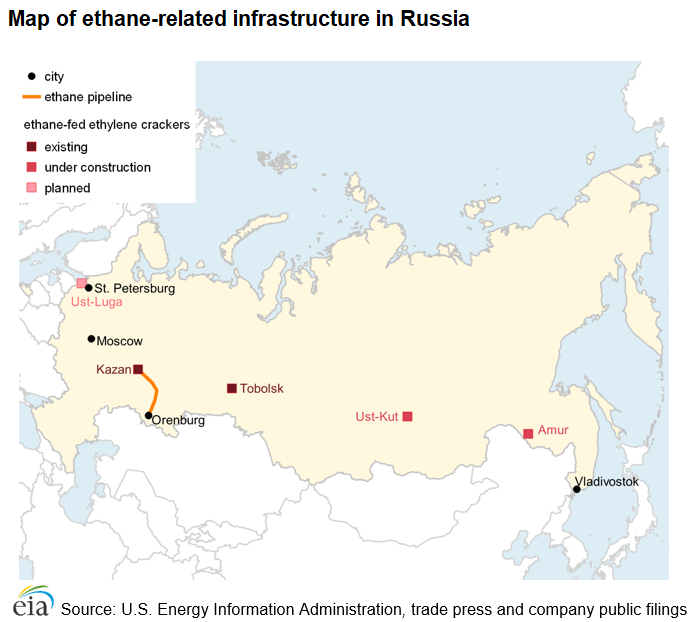
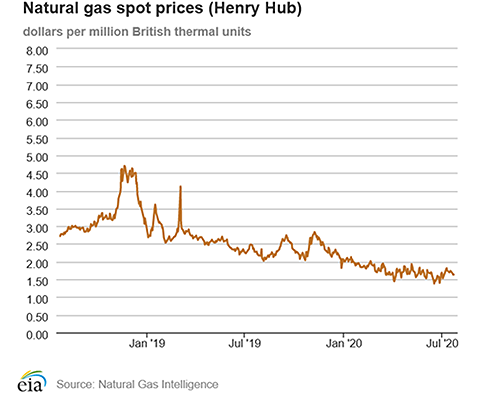
| Spot Prices ($/MMBtu) | Thu, 16-Jul |
Fri, 17-Jul |
Mon, 20-Jul |
Tue, 21-Jul |
Wed, 22-Jul |
|---|---|---|---|---|---|
| Henry Hub |
1.74 |
1.73 |
1.67 |
1.63 |
1.64 |
| New York |
1.57 |
1.74 |
1.76 |
1.75 |
1.76 |
| Chicago |
1.71 |
1.70 |
1.58 |
1.63 |
1.61 |
| Cal. Comp. Avg.* |
1.98 |
1.91 |
1.88 |
1.87 |
1.84 |
| Futures ($/MMBtu) | |||||
| August contract | 1.723 |
1.718 |
1.641 |
1.675 |
1.681 |
| September contract |
1.776 |
1.765 |
1.684 |
1.714 |
1.718 |
| *Avg. of NGI's reported prices for: Malin, PG&E Citygate, and Southern California Border Avg. | |||||
| Source: NGI's Daily Gas Price Index | |||||
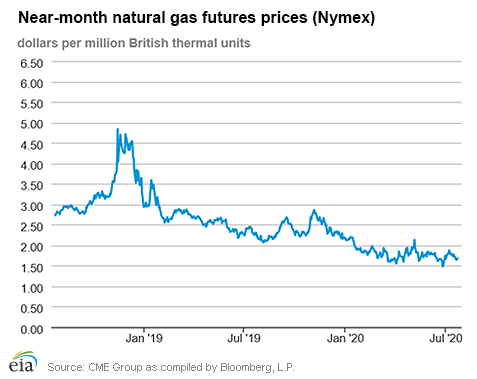
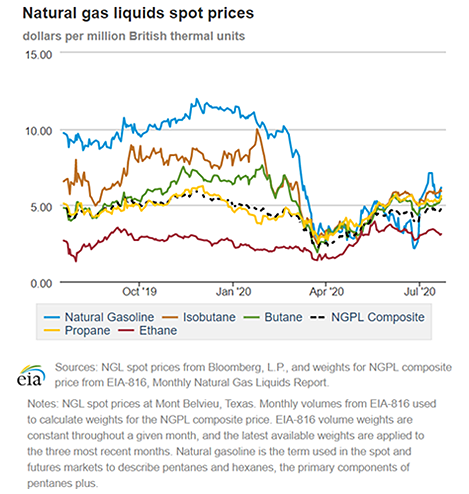
| U.S. natural gas supply - Gas Week: (7/16/20 - 7/22/20) | |||
|---|---|---|---|
Average daily values (Bcf/d): |
|||
this week |
last week |
last year |
|
| Marketed production | 101.4 |
100.4 |
101.9 |
| Dry production | 89.7 |
88.9 |
89.5 |
| Net Canada imports | 4.5 |
4.7 |
5.1 |
| LNG pipeline deliveries | 0.2 |
0.2 |
0.1 |
| Total supply | 94.4 |
93.7 |
94.7 |
|
Source: IHS Markit | |||
| U.S. natural gas consumption - Gas Week: (7/16/20 - 7/22/20) | |||
|---|---|---|---|
Average daily values (Bcf/d): |
|||
this week |
last week |
last year |
|
| U.S. consumption | 70.6 |
69.9 |
71.6 |
| Power | 41.3 |
40.9 |
43.2 |
| Industrial | 20.4 |
20.4 |
19.9 |
| Residential/commercial | 8.9 |
8.6 |
8.5 |
| Mexico exports | 5.6 |
5.7 |
5.4 |
| Pipeline fuel use/losses | 5.6 |
5.5 |
6.3 |
| LNG pipeline receipts | 3.7 |
3.3 |
6.1 |
| Total demand | 85.5 |
84.4 |
89.4 |
|
Source: IHS Markit | |||
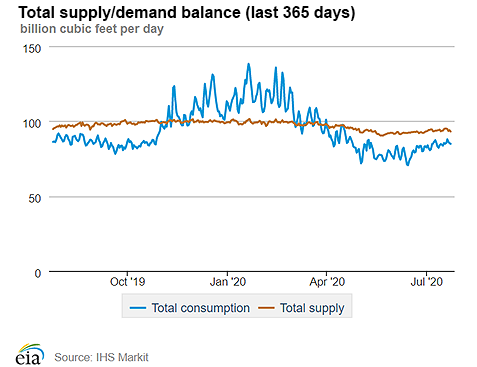
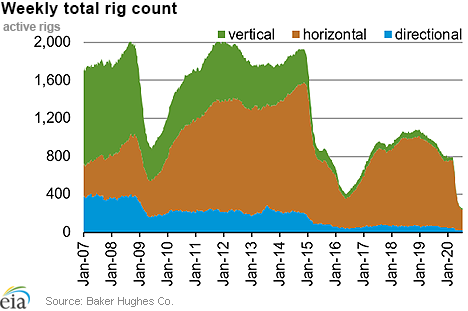
| Rigs | |||
|---|---|---|---|
Tue, July 14, 2020 |
Change from |
||
last week |
last year |
||
| Oil rigs | 180 |
-0.6% |
-76.9% |
| Natural gas rigs | 71 |
-5.3% |
-59.2% |
| Note: Excludes any miscellaneous rigs | |||
| Rig numbers by type | |||
|---|---|---|---|
Tue, July 14, 2020 |
Change from |
||
last week |
last year |
||
| Vertical | 15 |
-21.1% |
-73.2% |
| Horizontal | 215 |
-2.3% |
-74.1% |
| Directional | 23 |
21.1% |
-66.7% |
| Source: Baker Hughes Co. | |||
| Working gas in underground storage | ||||
|---|---|---|---|---|
Stocks billion cubic feet (Bcf) |
||||
| Region | 2020-07-17 |
2020-07-10 |
change |
|
| East | 693 |
672 |
21 |
|
| Midwest | 799 |
780 |
19 |
|
| Mountain | 190 |
186 |
4 |
|
| Pacific | 311 |
312 |
-1 |
|
| South Central | 1,221 |
1,228 |
-7 |
|
| Total | 3,215 |
3,178 |
37 |
|
|
Source: Form EIA-912, Weekly Underground Natural Gas Storage Report | ||||
| Working gas in underground storage | |||||
|---|---|---|---|---|---|
Historical comparisons |
|||||
Year ago (7/17/19) |
5-year average (2015-2019) |
||||
| Region | Stocks (Bcf) |
% change |
Stocks (Bcf) |
% change |
|
| East | 571 |
21.4 |
607 |
14.2 |
|
| Midwest | 643 |
24.3 |
667 |
19.8 |
|
| Mountain | 150 |
26.7 |
174 |
9.2 |
|
| Pacific | 270 |
15.2 |
295 |
5.4 |
|
| South Central | 923 |
32.3 |
1,036 |
17.9 |
|
| Total | 2,559 |
25.6 |
2,779 |
15.7 |
|
| Source: Form EIA-912, Weekly Underground Natural Gas Storage Report | |||||
| Temperature – heating & cooling degree days (week ending Jul 16) | ||||||||
|---|---|---|---|---|---|---|---|---|
HDD deviation from: |
CDD deviation from: |
|||||||
| Region | HDD Current |
normal |
last year |
CDD Current |
normal |
last year |
||
| New England | 0 |
0 |
0 |
61 |
20 |
-4 |
||
| Middle Atlantic | 0 |
-1 |
0 |
71 |
15 |
-5 |
||
| E N Central | 0 |
0 |
0 |
62 |
6 |
-16 |
||
| W N Central | 1 |
-2 |
1 |
68 |
-2 |
-12 |
||
| South Atlantic | 0 |
0 |
0 |
110 |
13 |
-8 |
||
| E S Central | 0 |
0 |
0 |
101 |
7 |
-1 |
||
| W S Central | 0 |
0 |
0 |
150 |
27 |
24 |
||
| Mountain | 1 |
-4 |
1 |
98 |
20 |
-4 |
||
| Pacific | 2 |
-2 |
1 |
56 |
14 |
-3 |
||
| United States | 1 |
-1 |
0 |
86 |
13 |
-4 |
||
|
Note: HDD = heating degree day; CDD = cooling degree day Source: National Oceanic and Atmospheric Administration | ||||||||
Average temperature (°F)
7-day mean ending Jul 16, 2020
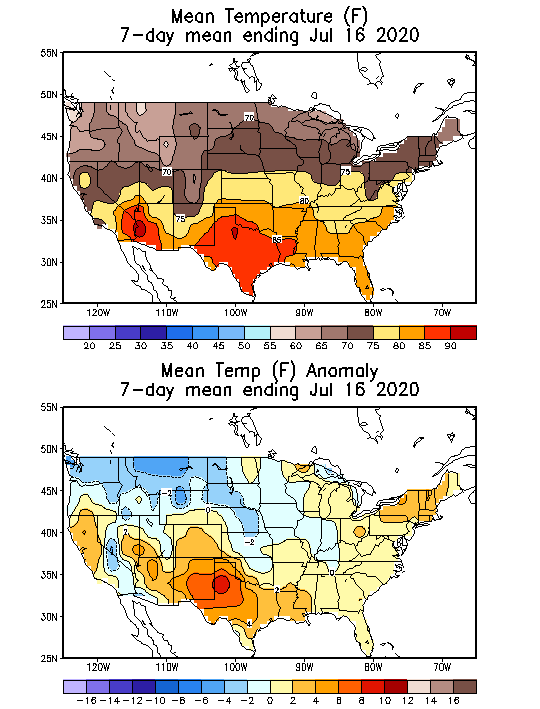
Source: National Oceanic and Atmospheric Administration
Deviation between average and normal (°F)
7-day mean ending Jul 16, 2020

Source: National Oceanic and Atmospheric Administration

